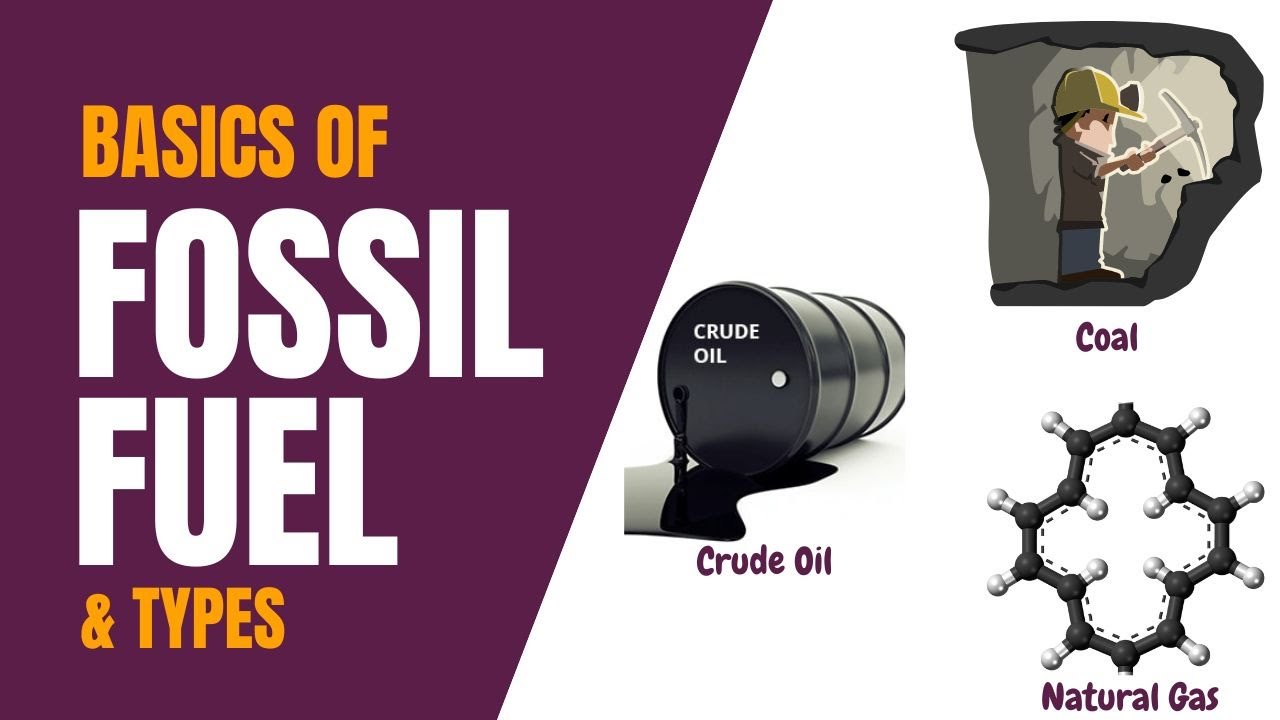Fossil Fuel Formation | Lesson 6 | Earth Science
Summary
TLDRThis educational video explores fossil fuels, highlighting their biological origins and the processes that transform organic matter into energy sources. It distinguishes between coal, oil, and natural gas, explaining how each is formed from different materials under heat and pressure. Coal, primarily plant-based, varies in carbon content and grade, while oil and natural gas originate from marine organisms and microorganisms. The video also touches on the geological factors influencing fossil fuel formation, such as sedimentation and the role of source and reservoir rocks in oil and gas deposits.
Takeaways
- 🌿 Fossil fuels are energy sources derived from the remains of ancient biological materials, unlike energy from non-living sources like solar or geothermal.
- 💧 Fossil fuels are primarily composed of hydrocarbons, which are compounds of hydrogen and carbon, with traces of other elements.
- 🌳 Coal is a sedimentary rock formed mainly from plant remnants, with varying carbon content that determines its type and quality.
- 🐟 Oil and natural gas are formed from marine organisms and microorganisms, with different carbon-to-hydrogen ratios affecting their physical state.
- 🔥 The formation of coal, known as coalification, is influenced by temperature and pressure over millions of years, starting in swamps rich with vegetation.
- 🌱 The initial stage of coal formation involves the accumulation of plant debris under sediments, leading to slow decomposition and transformation.
- 📈 There are different types of coal ranging from lignite to anthracite, each with increasing carbon content and decreasing moisture.
- 🌊 Oil and natural gas formation begins with the death of marine organisms, which are then transported and preserved in sediments.
- 🛢️ The transformation of organic matter into oil and gas occurs as the sediment, called source rock, is subjected to increasing heat and pressure.
- 🏭 Reservoir rock and cap rock are crucial in the formation of oil and gas deposits, with the former being porous and permeable, and the latter sealing the deposits.
Q & A
What are fossil fuels?
-Fossil fuels are energy sources that originated from biological materials, mainly composed of hydrocarbons, which are compounds of hydrogen and carbon.
What are the main components of organisms that contribute to fossil fuel formation?
-Organisms are mainly composed of carbon, hydrogen, oxygen, and nitrogen, which contribute to the formation of fossil fuels, primarily carbon and hydrogen after exposure to heat and pressure.
What are the three main types of fossil fuels?
-The three main types of fossil fuels are coal, oil, and natural gas.
What is the primary difference between coal and oil/natural gas in terms of their formation materials?
-Coal is mostly made up of remnants of plants, while oil and natural gas are made up of marine organisms and microorganisms.
What is the state of matter for each type of fossil fuel?
-Coal is a solid, oil is a liquid, and natural gas is a gas.
What is coal considered in terms of rock type?
-Coal is considered a sedimentary rock, specifically a bioplastic sedimentary rock.
What is the process of coal formation called?
-The process of coal formation is called coalification.
During which geological period did most of the coal on Earth originate?
-Most of the coal on Earth originated from the Carboniferous period, between 360 to 290 million years ago.
What are the different types of coal and their carbon content ranges?
-The different types of coal are lignite (less than 60% carbon content), sub-bituminous (65 to 70% carbon), bituminous (almost 86% carbon), and anthracite (86 to 98% pure carbon).
What is the source rock and its role in the formation of oil and natural gas?
-The source rock is a mixture of dead organisms and inorganic matter that, under heat and pressure, produces kerogen, which is the intermediate material for oil and gas formation.
What are reservoir rock and cap rock, and their importance in oil and natural gas formation?
-Reservoir rock is a porous and permeable rock that can contain oil and gas deposits, while cap rock is an impermeable rock that seals these deposits, preventing them from escaping.
Outlines

此内容仅限付费用户访问。 请升级后访问。
立即升级Mindmap

此内容仅限付费用户访问。 请升级后访问。
立即升级Keywords

此内容仅限付费用户访问。 请升级后访问。
立即升级Highlights

此内容仅限付费用户访问。 请升级后访问。
立即升级Transcripts

此内容仅限付费用户访问。 请升级后访问。
立即升级5.0 / 5 (0 votes)






